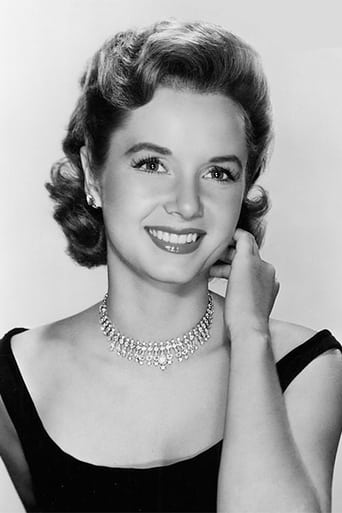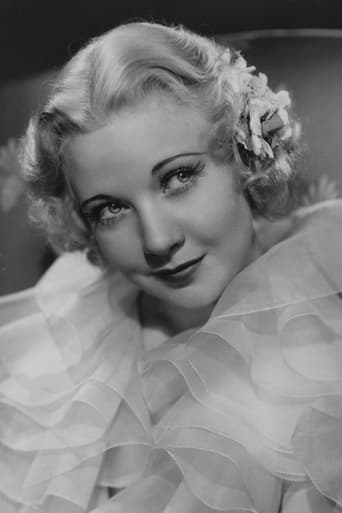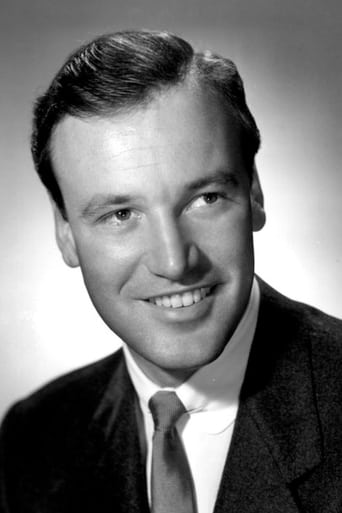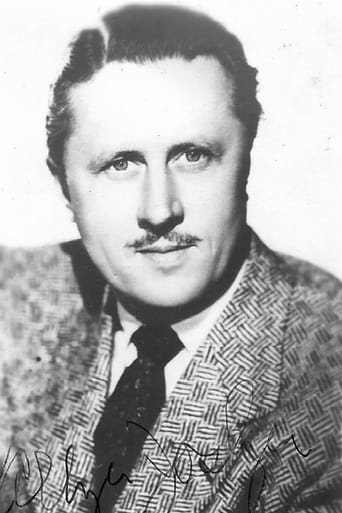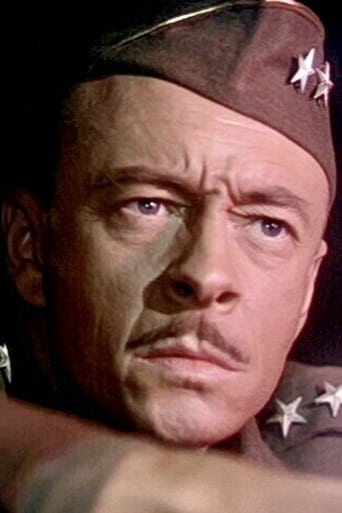weezeralfalfa
The sheer energy and delight of Debbie Reynolds and Don O'Connor in their frequent musical/comedy numbers in a rather short (76 min.)film is best summed up in the best remembered song by the film composer-lyricist team of Josef Myrow and Mack Gordon:"You Make Me Feel So Young".Unfortunately, this song, previously composed for another film, was not included. Nonetheless, this team comes up with some quite serviceable songs that express the feelings of the duo or are appropriate for their stage productions. Debbie is in 3 elaborate song and dance or comedy routines, while O'Connor gets 2 solo dance/comedy routines. They only have one song and dance number together, but it's a very energetic 'getting to know you' one, where they bound and bounce all over the furniture in her family's living room. Much reminds me of the "How About You" performance by Mickey and Judy in "Babes on Broadway"(1940). There is also a very clever early scene where Debbie and O'Connor are walking/frolicking on opposite sides of a Manhatten Central Park hedge row, singing about what their ideal mate will be like, before crashing into each other at the end of the hedge row. This hedge will show up again in the final comedic scene of the film. In addition, pint-sized Noreen Corcoran, as Debbie's little sister, Clarabelle, sings "Life Has Its Funny Little Ups and Downs" to O'Connor to cheer him up, after being hold he's not welcome to share dinner with Debbie's family.Debbie's character,Judy, has two goals:find Mr. Right, and to become a big Hollywood star. She discovers that O'Connor's character, Melvin, may be the answer to both her desires, if he can somehow convince the editor of Look magazine to feature her on their cover, and if she can convince her father to back Melvin as her fiancé, instead of handsome, established, but rather dull Harry Flack. These are both very formidable obstacles for Melvin. But, where there's a will, there's usually a way, even if it involves a bit of trickery, deception, embarrassment, and luck. I leave the details for you to see. Judy has two dream sequences, one before and one after she meets Melvin, where she is a show starlet. Both are quite entertaining. In the first, she sings "A Lady Loves", in a routine tailor-made for Marilyn Monroe, mobbed by a bevy of press photographers and men in cloaks and top hats. In the second, she is clearly a big Hollywood star, initially in imitation of Marilyn Monroe(I assume), then as herself, dancing with 3 men with Fred Astaire masks and 3 men with Gene Kelly masks.She even wins the Academy Award, with a giant statue. Judy also has a spectacular non-dream role as a human football, in a Manhatten Crown Theater show: "Quarterback Kelly", which includes two alternatively dancing/playing teams, which toss, carry and kick her around. Must have been some trick photography involved when she goes tumbling through the goalposts!..There is also an outtake on the current DVD release of a reprise of "A Lady Loves", that I wish they had kept in. It appears to be part of Judy's second dream sequence, with O'Connor as the cinematographer and sometimes dance partner. Certainly, excessive film lengthening wasn't an excuse for deletion!O'Connor scooped Gene Kelly by about 2 years in his tap dance on roller skates scene, which was part of his overall roller skating act in an elevated gazebo, for the entertainment of little Clarabelle, whose skates he borrowed. Woudn't think her skates would fit him! Reportedly, skates with locked wheels were used for his tap dancing segment, and a string(sometimes slightly visible at slow motion)was tied around his waist to keep him from flying off the gazebo during his speed skating segment, until it was time to land in the shrubbery. Kelly's more extensive and much better known roller skating act was performed in "It's Always Fair Weather", which was done very much like his classic "Singing in the Rain" act, on a crowded street and sidewalk. Actually, the first film roller skating dance, including some tap dancing, I'm aware of was done by the duo of Fred and Ginger, in "Shall We Dance", way back in 1937!In O'Connor's second solo act, he really goes into his hyperactive mode, first singing and dancing to " I Wanna Wander", before going through a period of frantically changing from one ethnic costume to another, for just a few seconds each. After falling off a Swiss mountain, he becomes a Hollywood version of a cannibal, then played various characters in a bizarre Sherlock Holmes-like skit. Parts were good but, overall,it would have been more entertaining if he had stuck to fewer characters and exploited their potential more.Also, the addition of another person, maybe Debbie, in some parts,would have been a plus. My favorite was his transformation, while hidden in a giant stew cauldron, from a cannibal into an over-the-top version of Carmen Miranda.Honorable mention should be made of Jim Backus, who played Melvin's ever needling boss, to Richard Anderson, for his thankless role as Melvin's romantic competition for Judy, to Allyn Joslyn, as Judy's one-step-behind-reality father, to Una Merkel, as Judy's mother, and again to Noreen Corcoran, who added much more than her pint size to the enjoyment of the film. I dare you to watch this film just after "Singing in the Rain" and tell me which was more enjoyable! About equal?


